The Leeds (Philip Clark) Donation
Instruments of Philip Clark and Leslie Pyrah
One of the reasons for the original creation of the Museum of Urology was to bring together collections of urological instruments from Hospitals and private collections throughout the country, so that anyone can share them and see them easily.
These collections, both large and small, have been photographed so they can remain in their hospitals or collections, whilst also being showcased in the Museum of Urology. Some have been generously donated to the museum for safekeeping and future study.
These instruments were given by the family of Philip Clark, a former Consultant Urologist from Leeds and a Past President of the Urology Section of the Royal Society of Medicine. As well as his own instruments they contain some used by his predecessor Leslie Pyrah, a Past President of BAUS and a major force in the development of urology departments in the UK.
Click on any image tfor a full-screen view of the instrument (opens in a new browser window)
Paediatric cystoscope
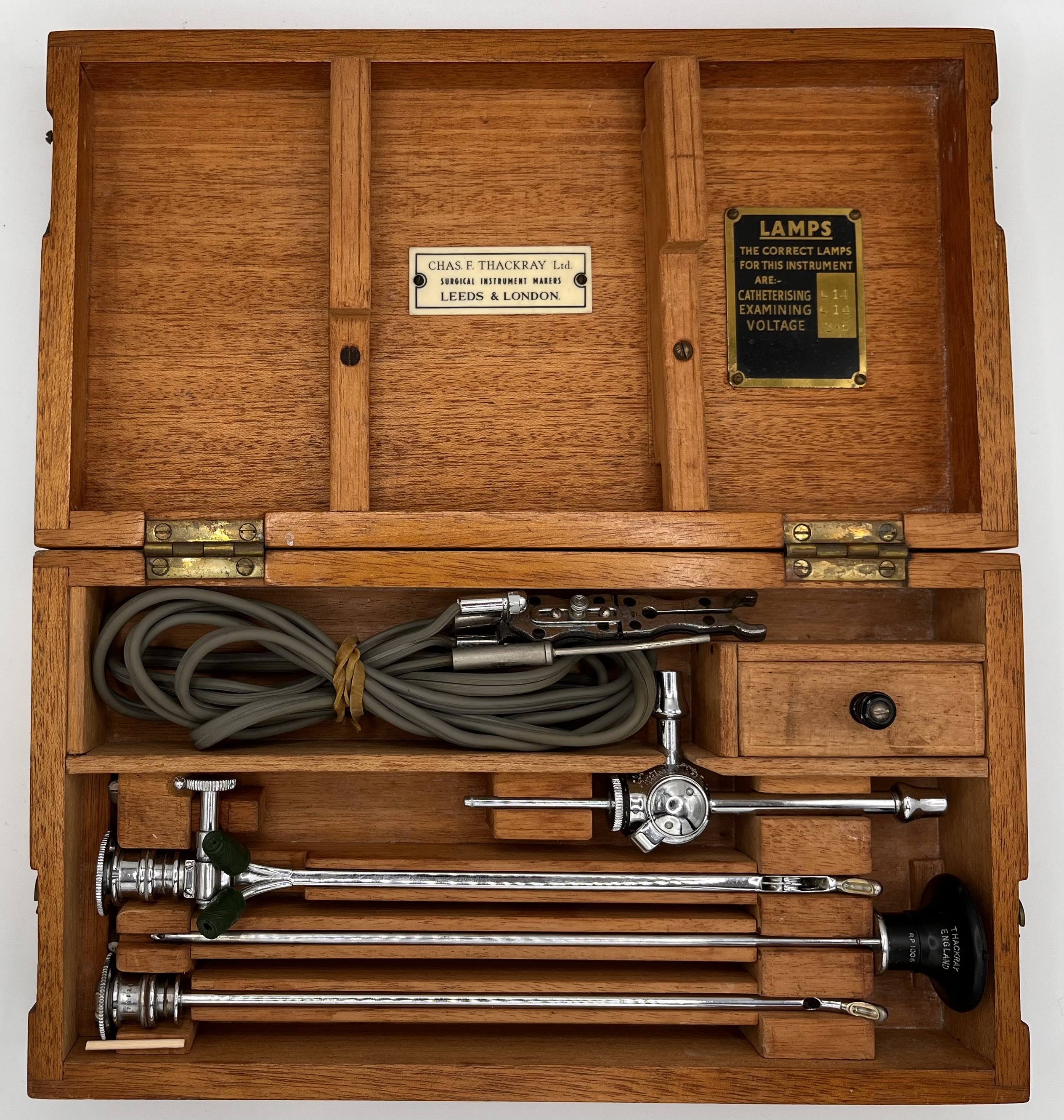
Addisons paediatric cystoscope made by Charles Thackray of Leeds
Gershom Thompson punch
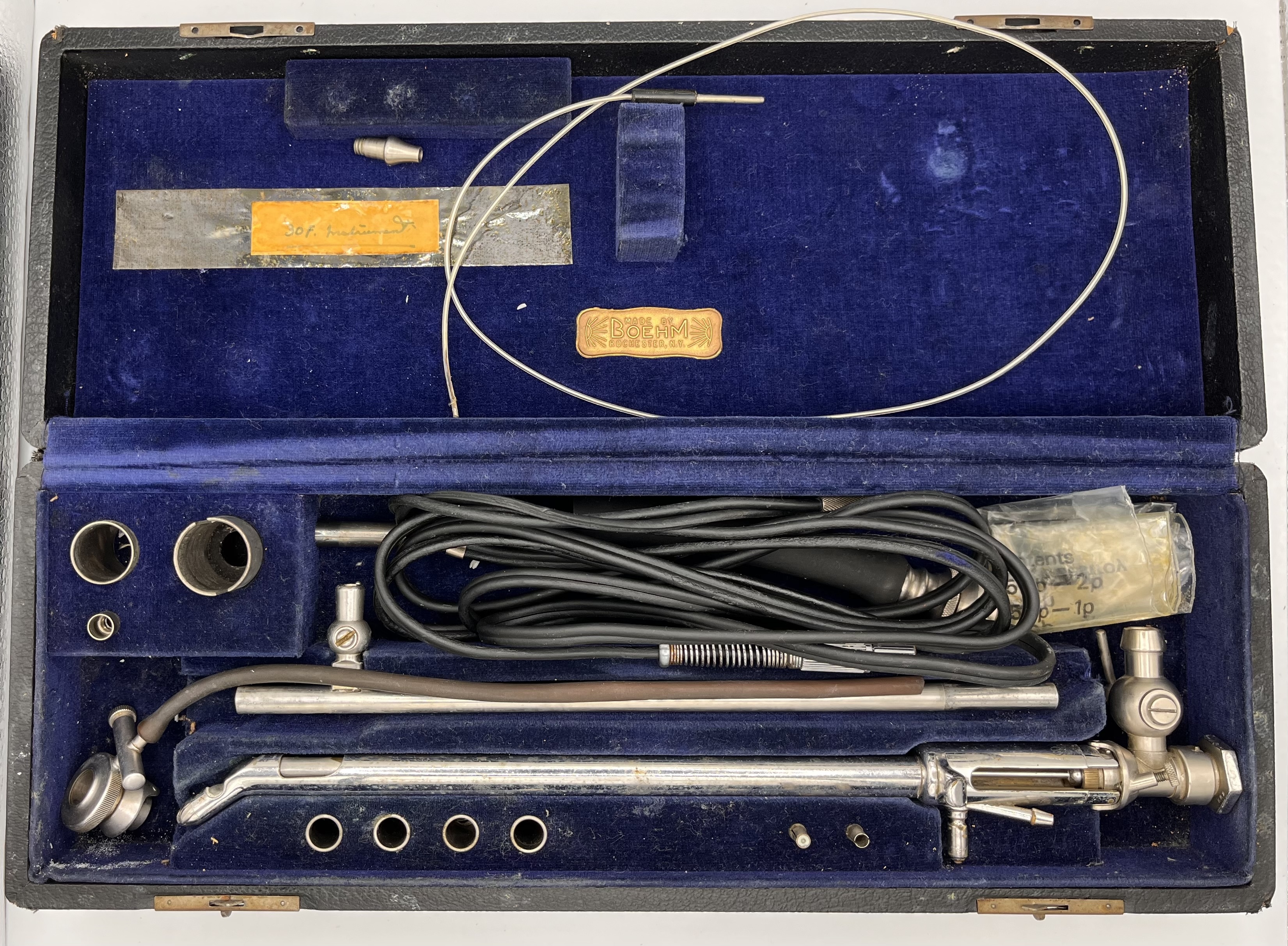
Made by the US company Bohem of Rochester, New York. Possibly brought back by Pyrah who went to the USA to learn the technique.
A selection of bone cutters
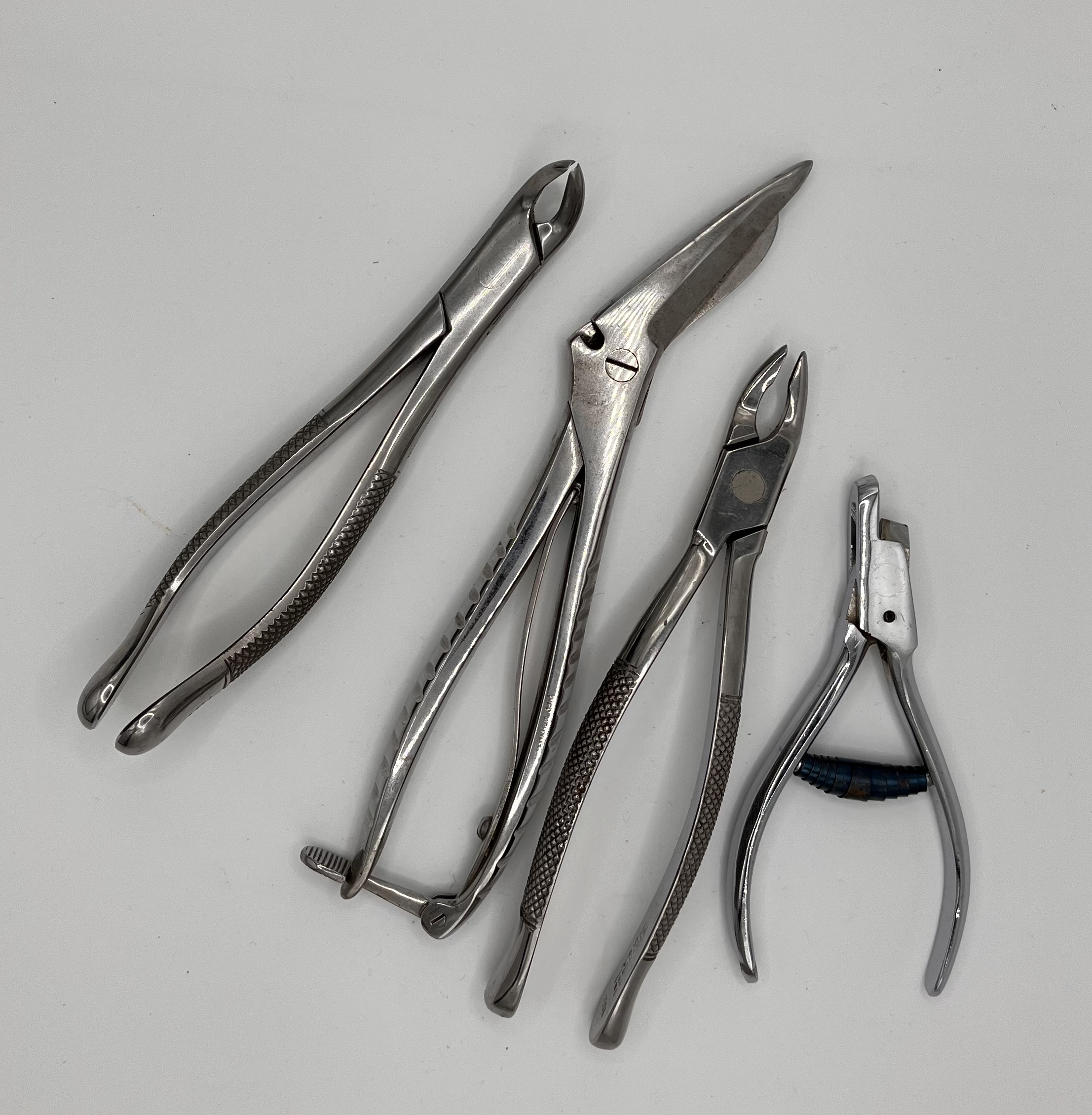
Used by urologists to remove ribs when performing nephrectomies via a loin incision.
Bonney Reverdin needle holder
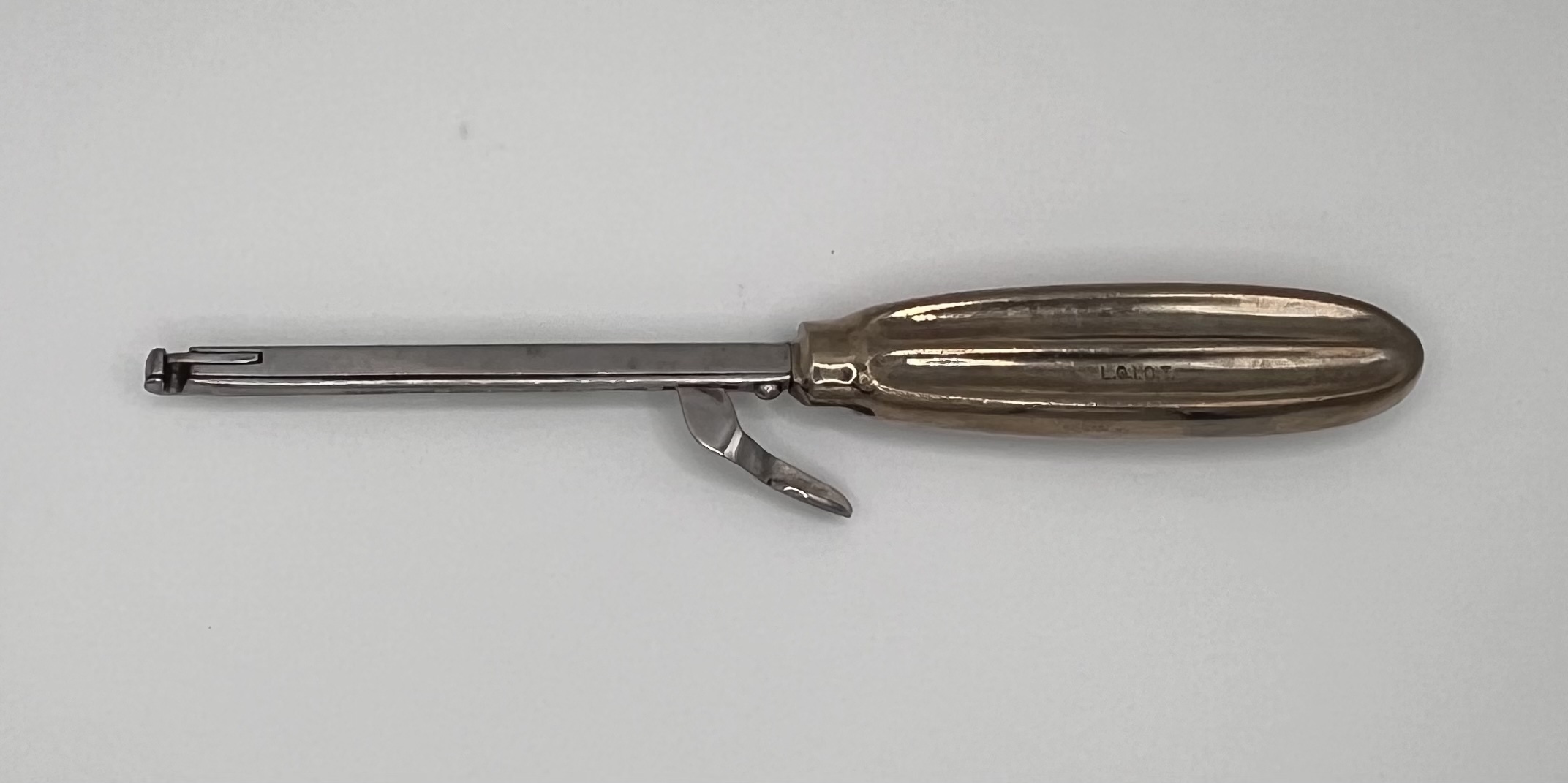
This is a handled needle with a distal eye, the needle is fixed to the holder. It is similar to the boomerang needle used in perineal and Millin's prostatectomy.
Silver catheters

A full set of silver plated catheters, the gap in the middle was for a glass bottle which contained a lubricant, this has sadly been lost.
Kidd's ball
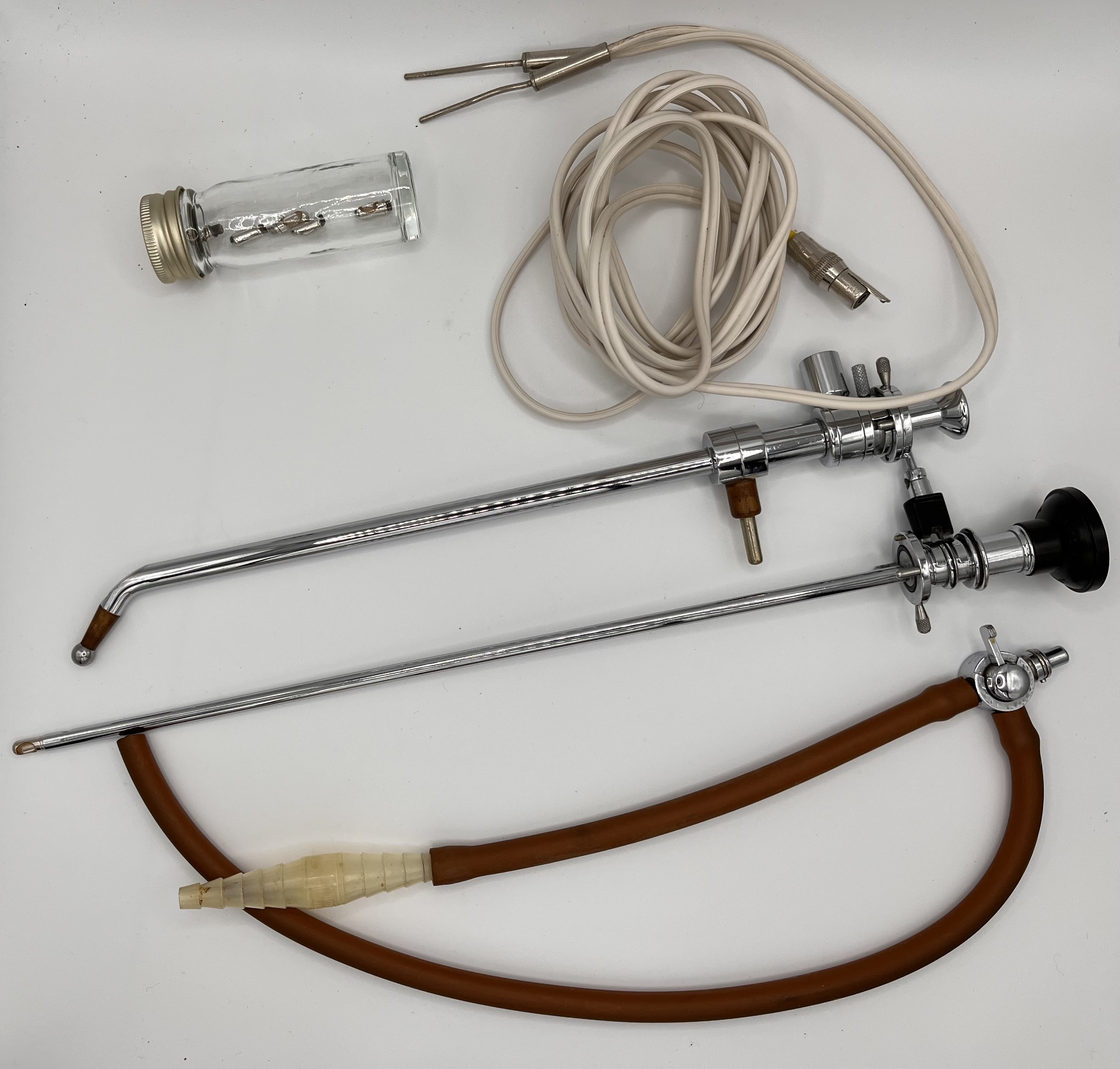
Designed by Frank Kidd in 1925 this was used to fulgarate bladder tumours.
Durhams retractors
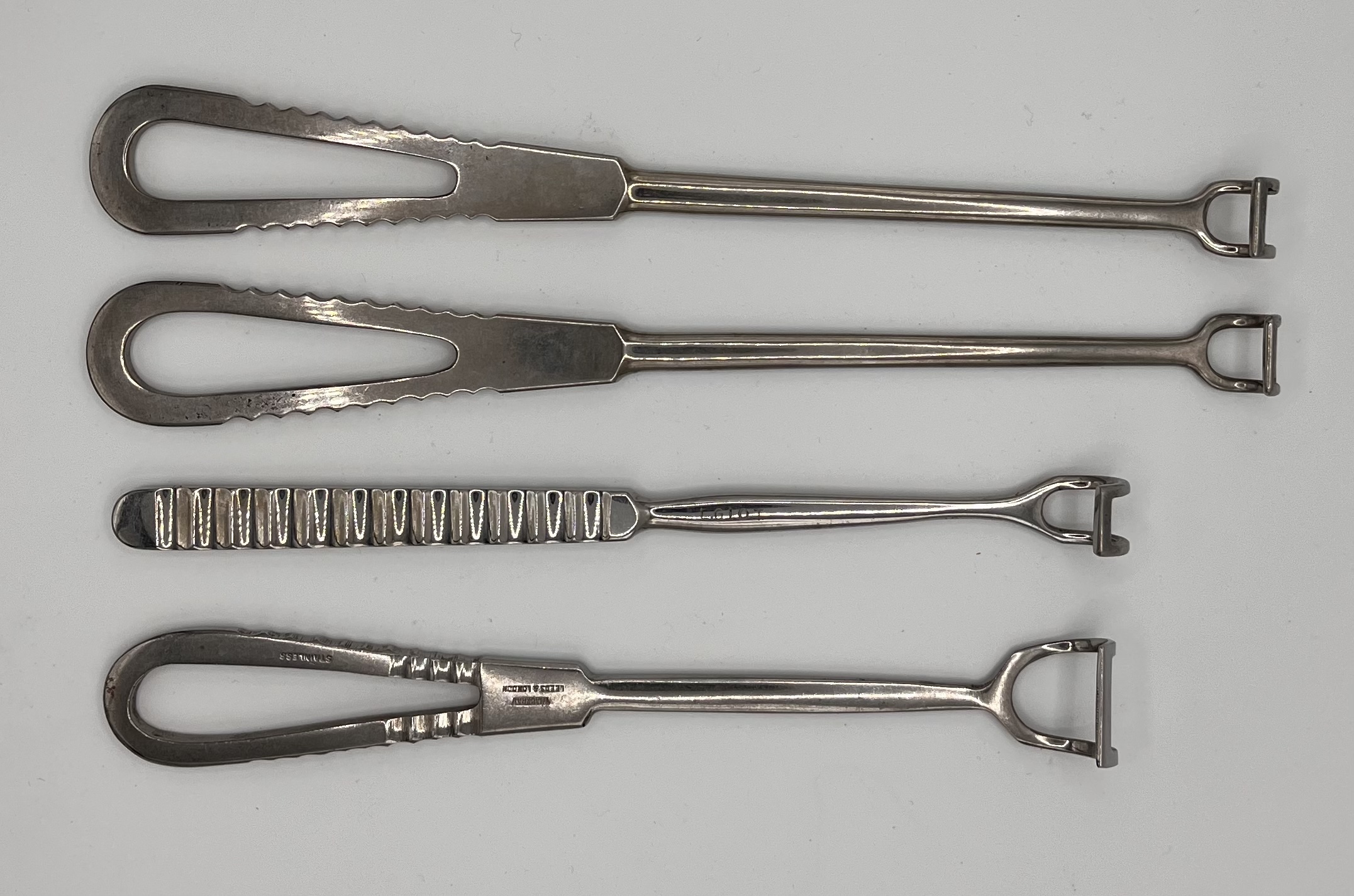
A selection of these useful small hand held retractors originally designed by Arthur Durham of Guys who was a very early British renal surgeon.
Braasch cystoscope
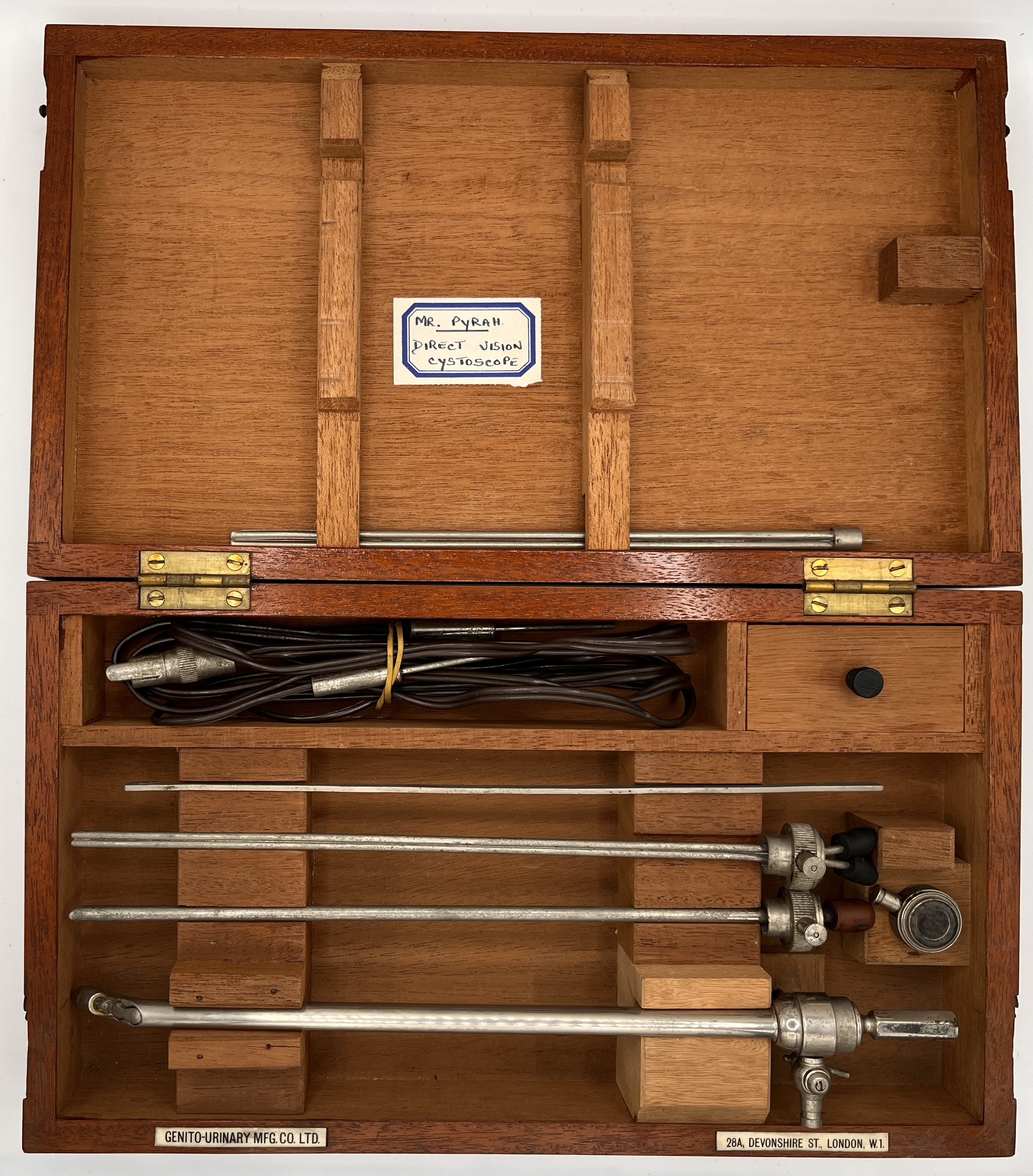
Early direct vision cystoscope used by Leslie Pyrah
Fergusson's bladder tumour forceps
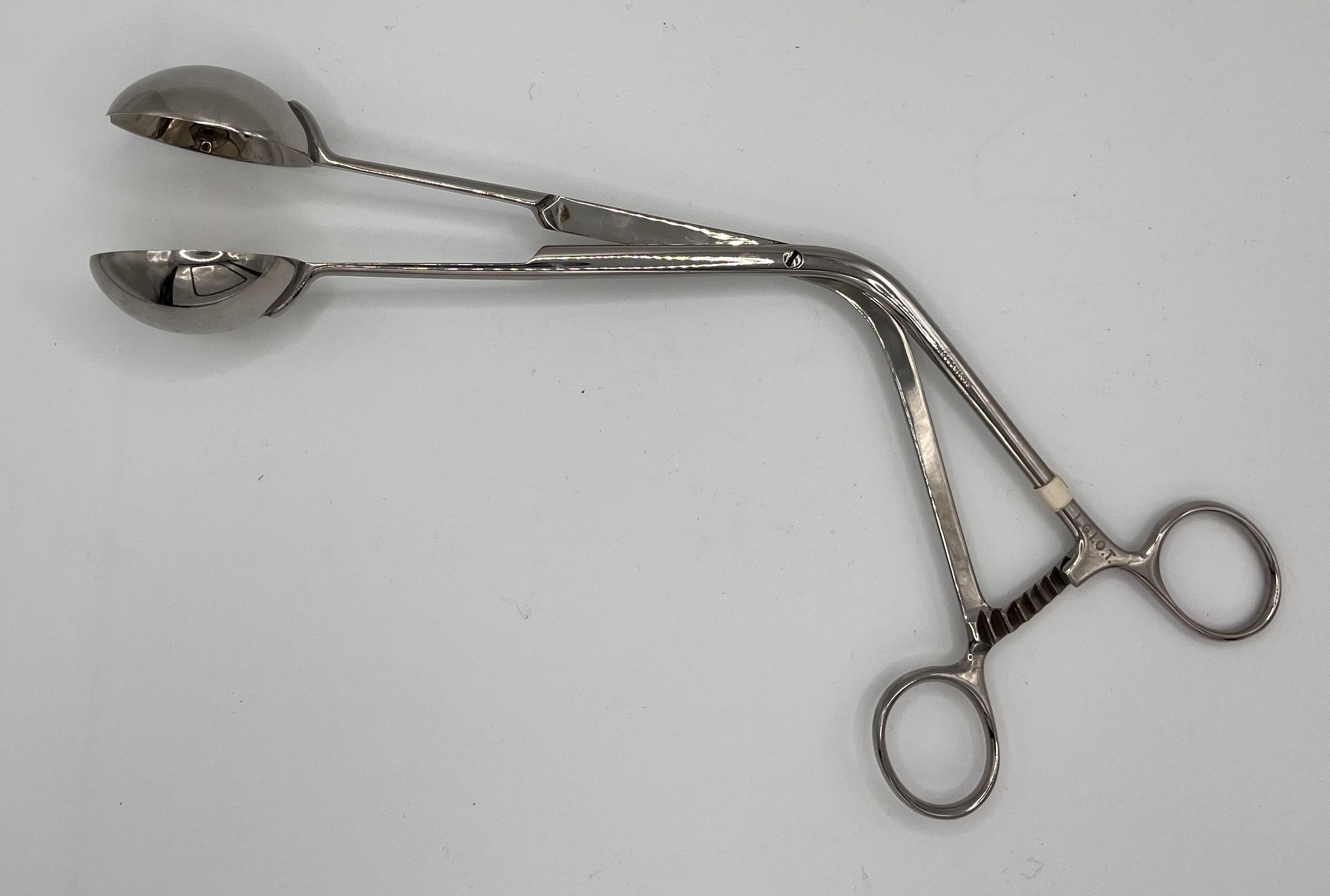
Used to hold papillary bladder tumours (via an open cystotomy) to allow them to be resected by a diathermy point.
Grasper
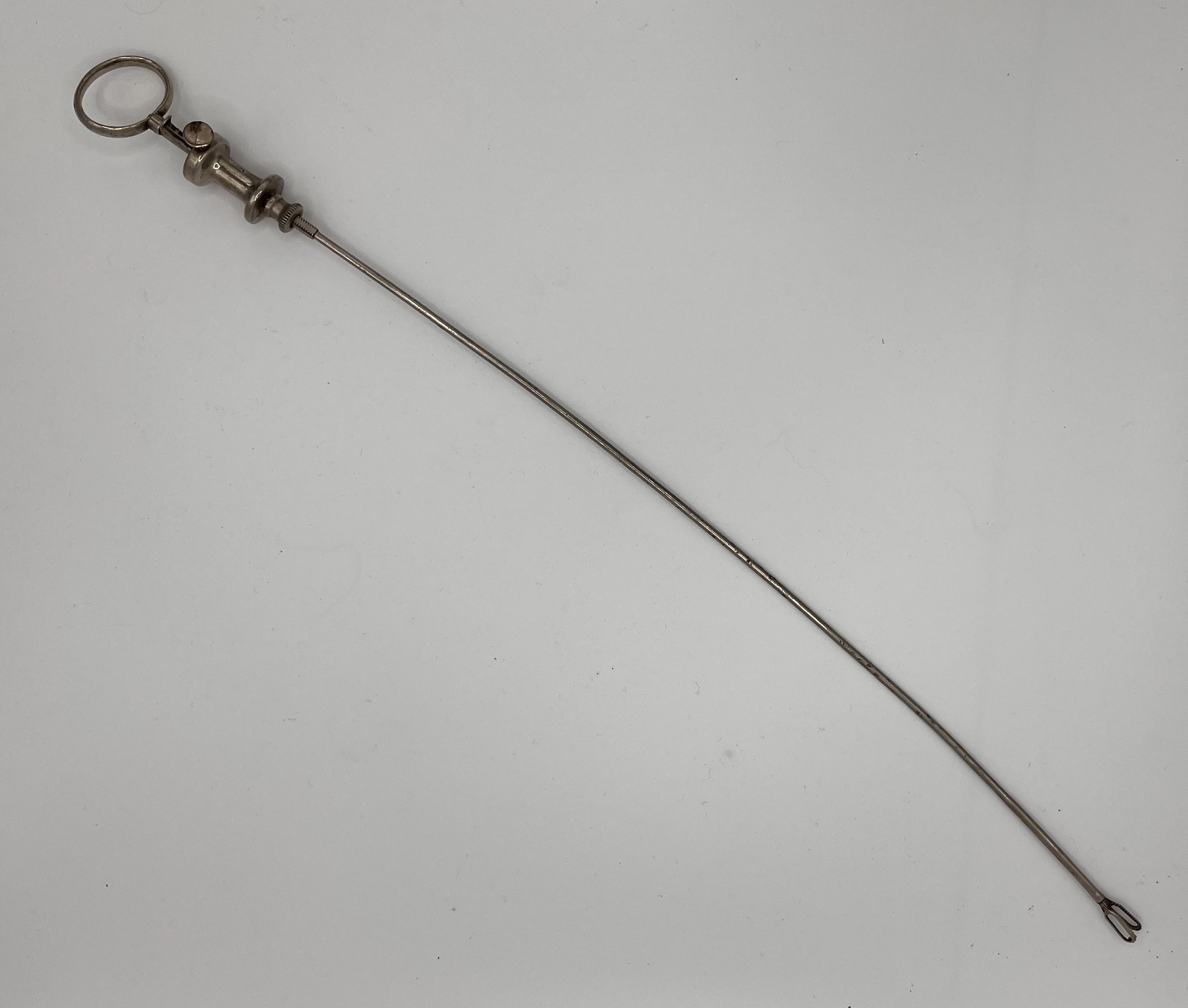
For taking samples via a cystoscope
McCarthy's resectoscope
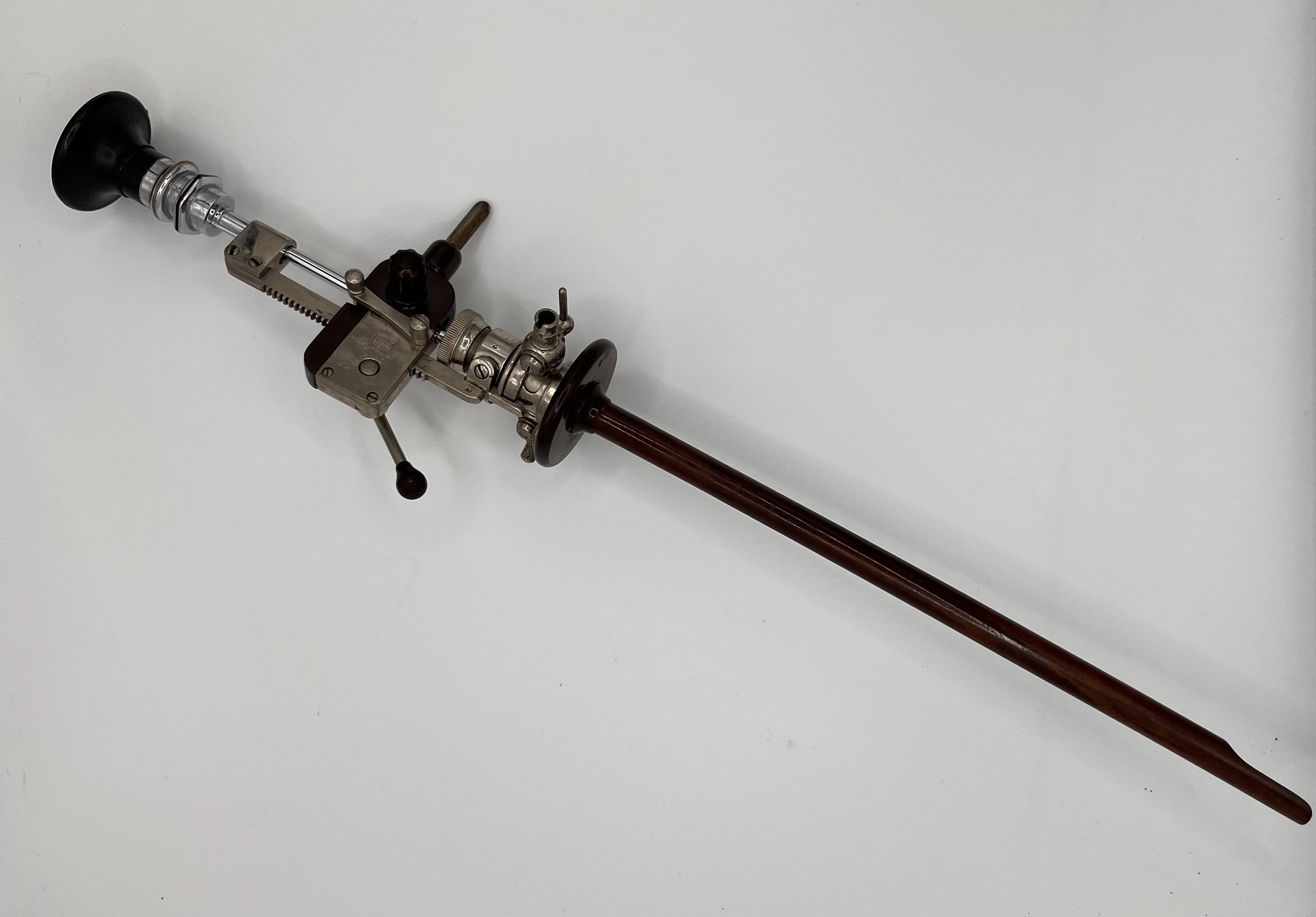
Early rack and pinion resectoscope
Reverdin's needle
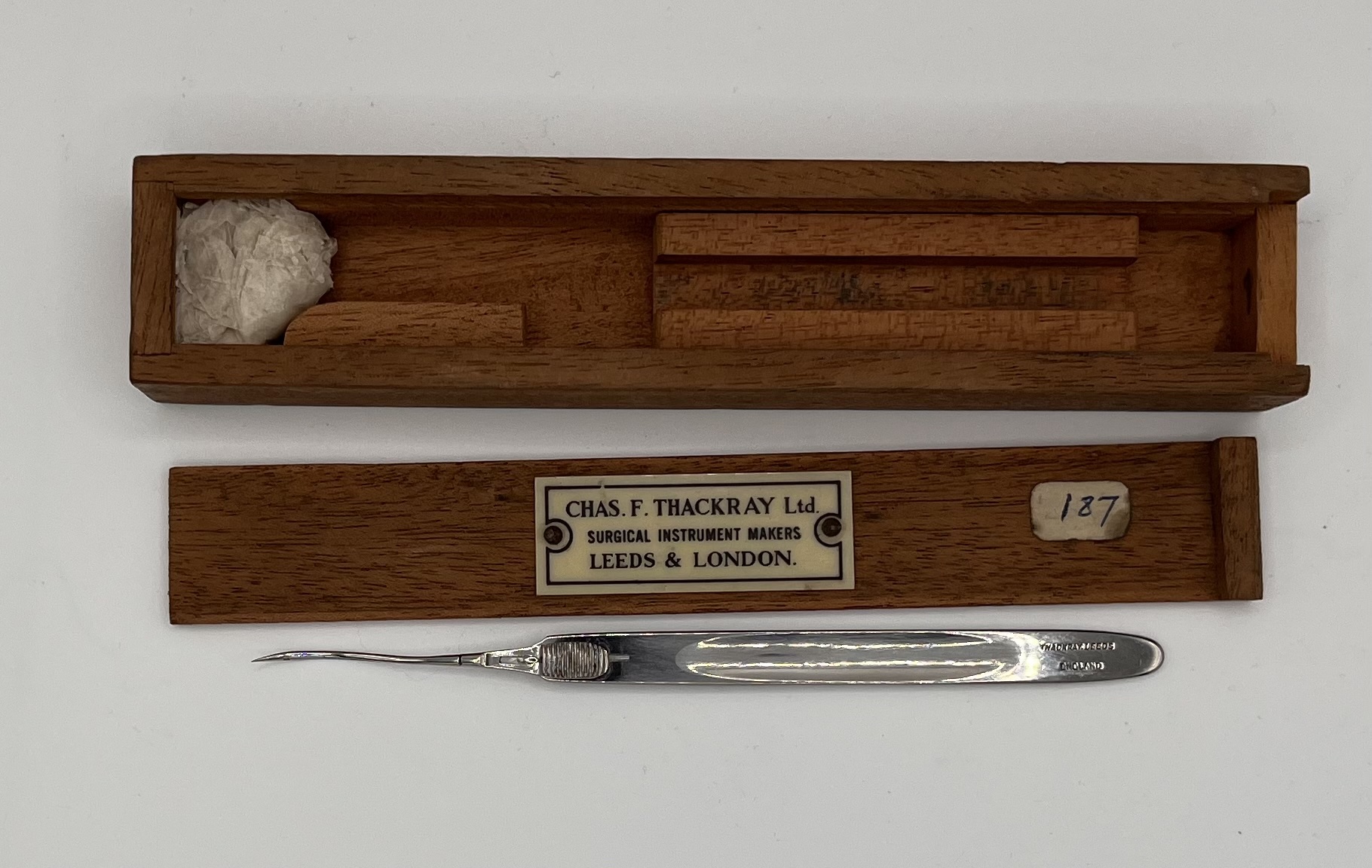
Handled distal eyed needle, this is an earlier model than the Bonney Reverdin needle above.
Lithotrites
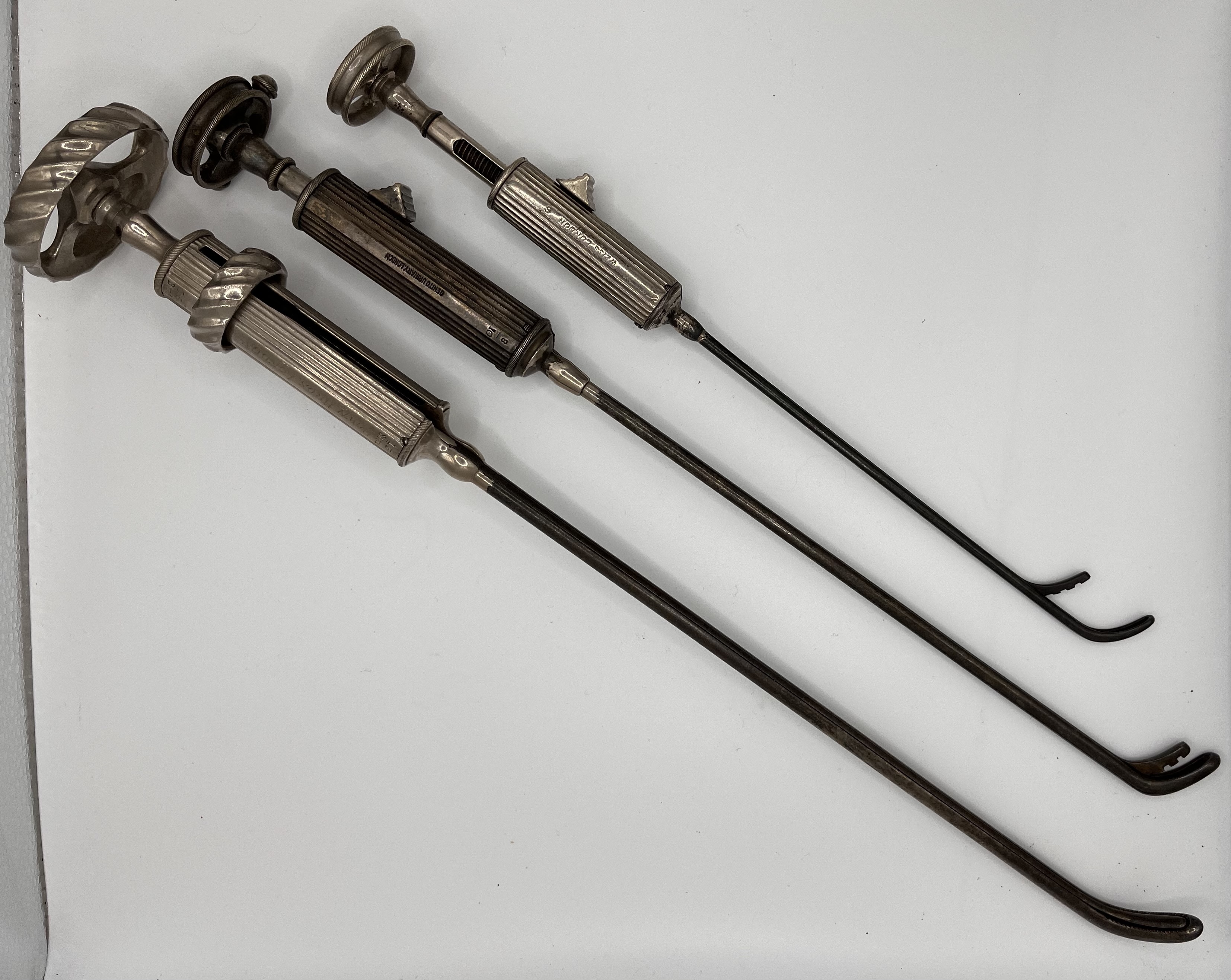
Three blind lithotrites. From above, a small child's Thompson, a standard Thompson and a Milton.
Milton's lithotrite

Milton Lithotrite designed, in 1896, by Herbert Meyrick Nelson Milton, medical officer at the Kasr El Aini Hospital in Cairo
Milton's lithotrite detail
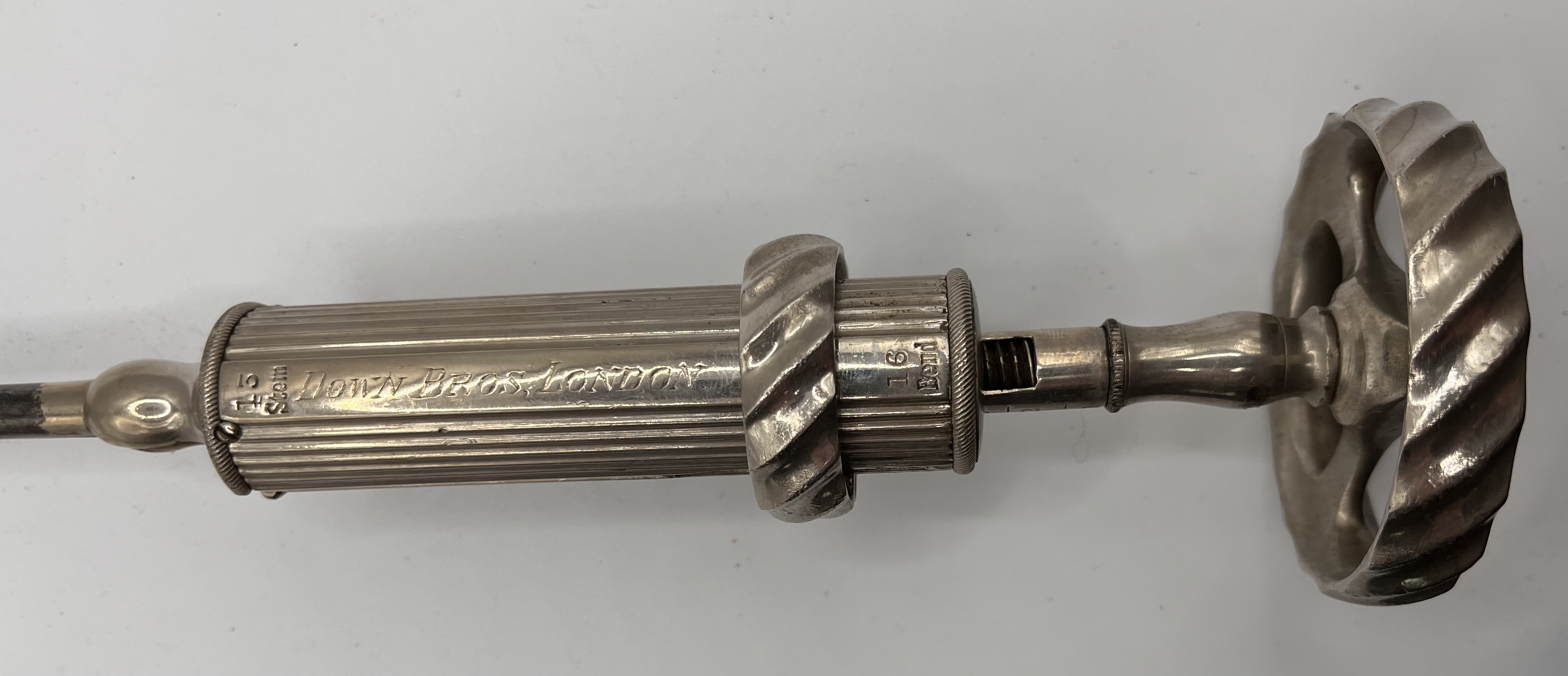
Detail of the Milton lithotrite handle. The large handle allowd the breaking of larger stones.
Telescopes
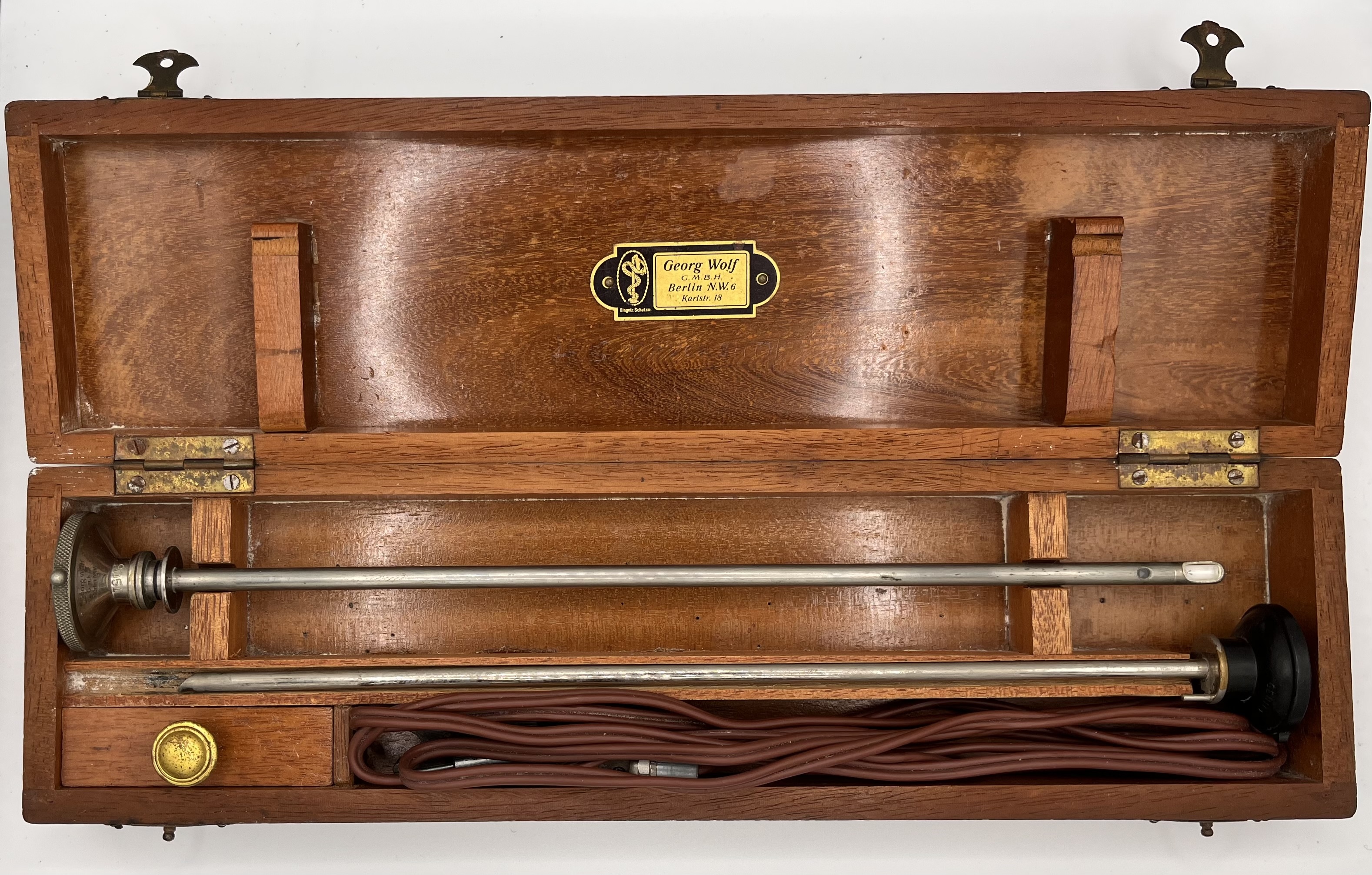
Two telescopes in a wooden box.
Pyrah's clamps
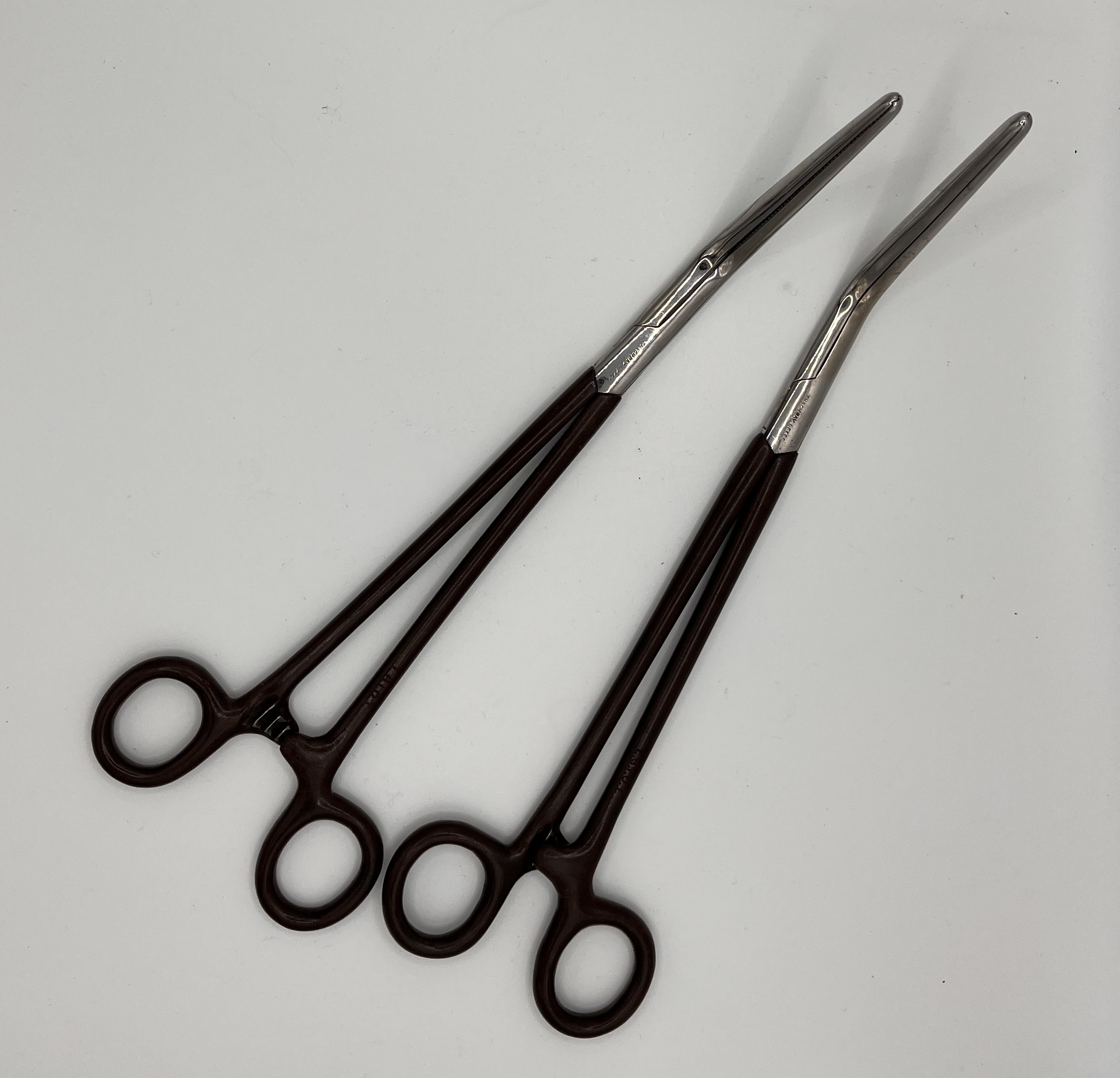
Used to clamp the lateral pedicles during cystectomy
Pyrah's retractor
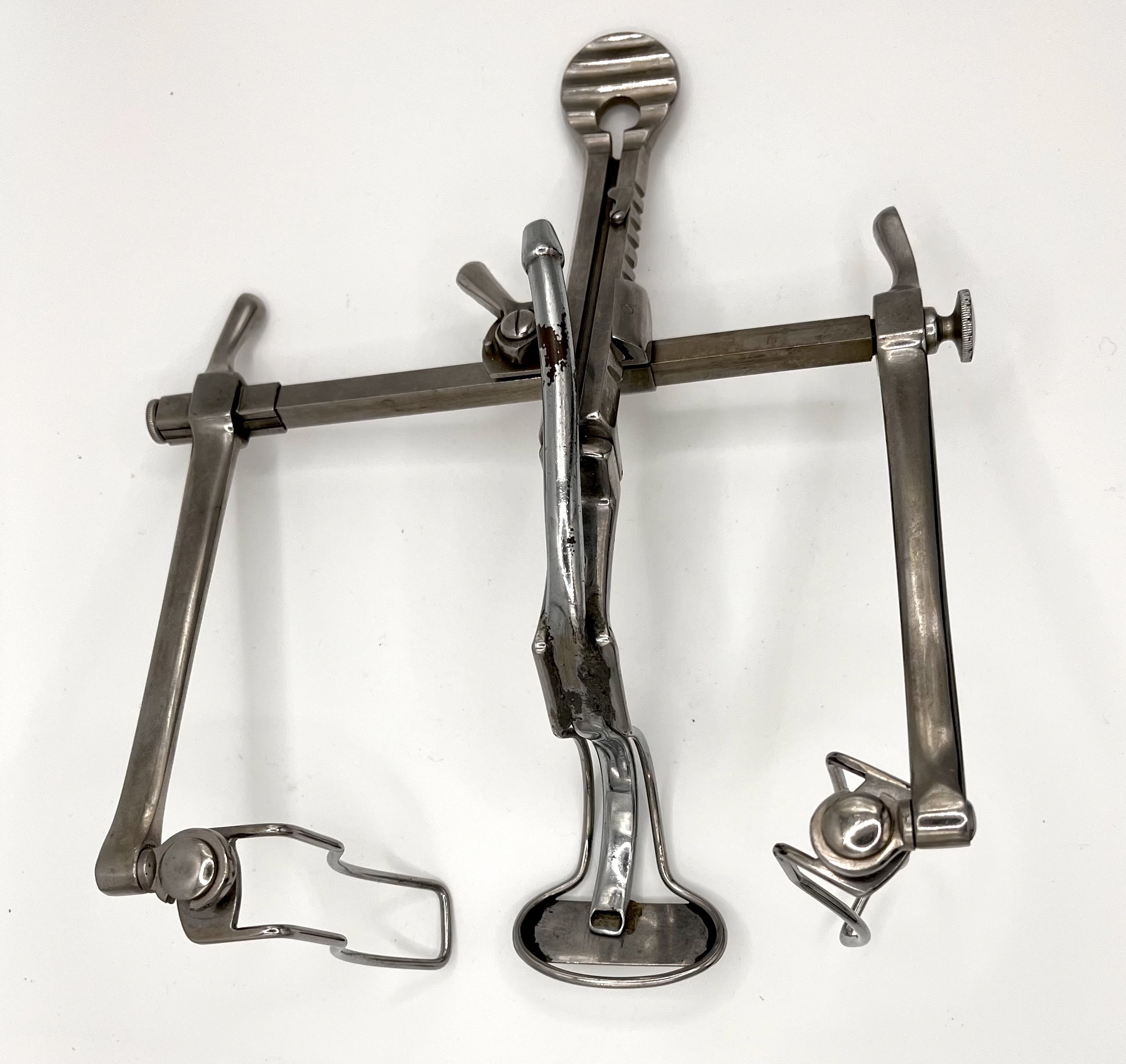
Leslie Pyrahs's modification of a Morson retractor with integral sump suction.
Riches's SPC
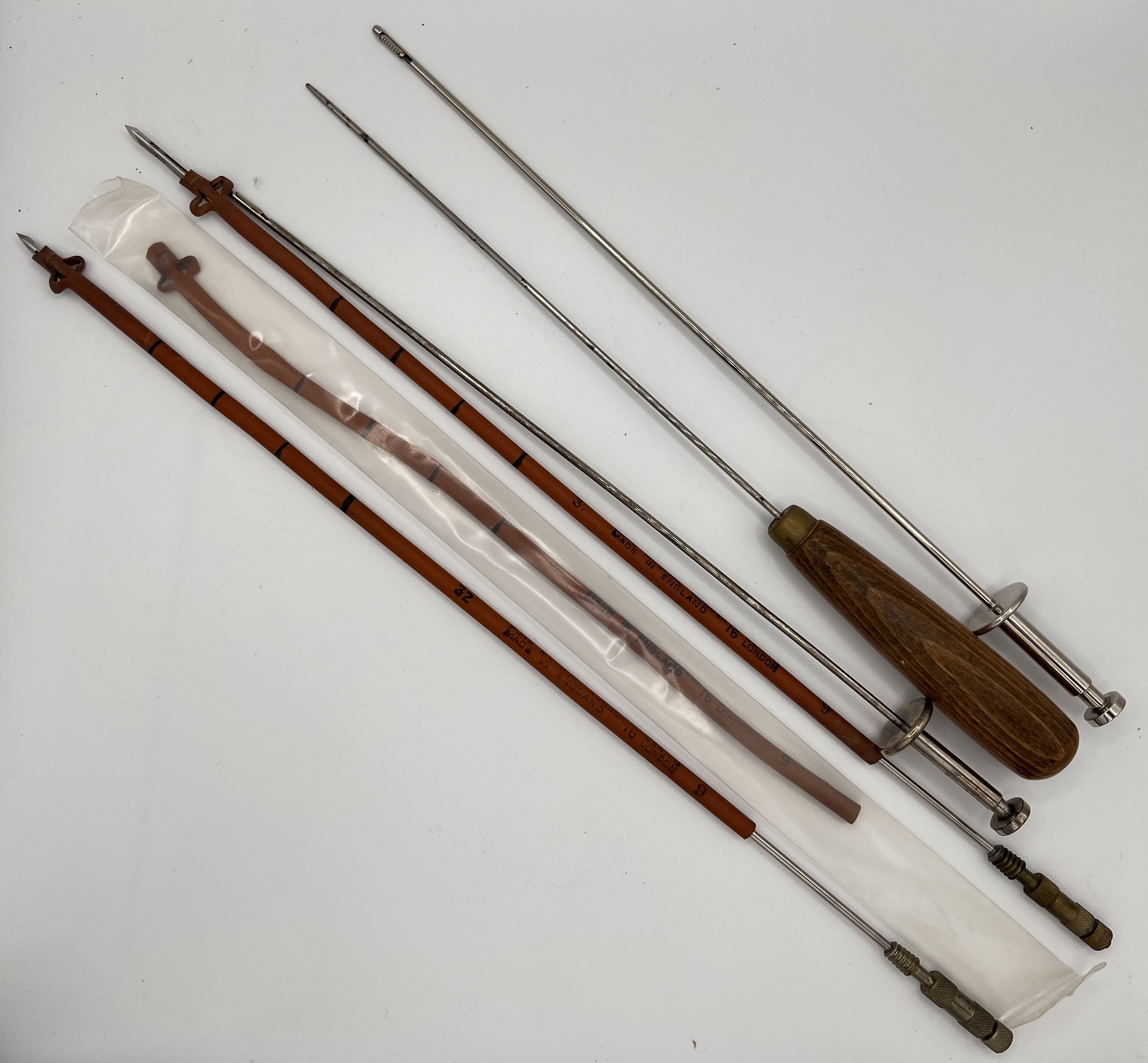
Suprapubic catheter insertion set designed by Sir Eric Riches in 1949
Rubber catheters
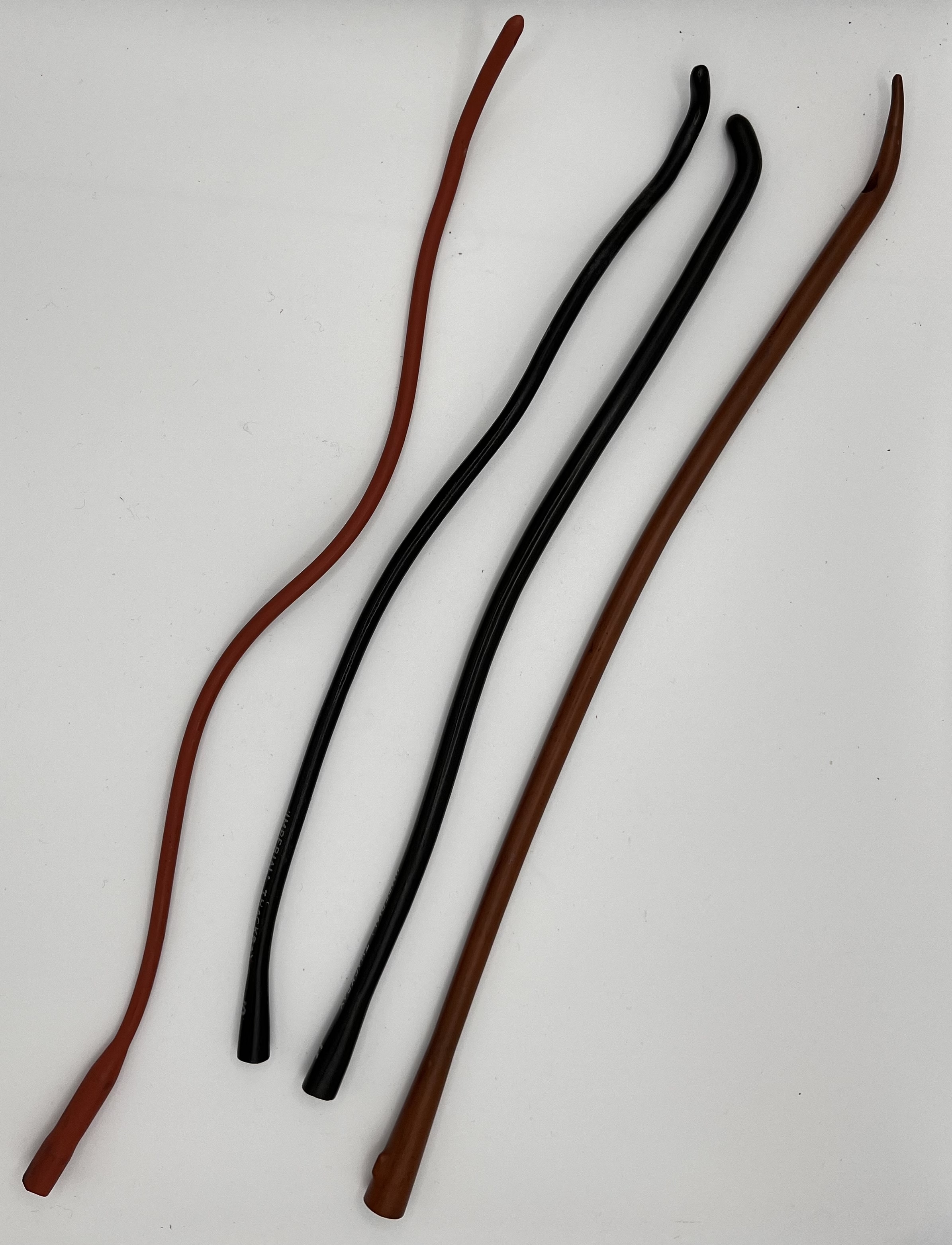
Selection of rubber catheters
Stone forceps
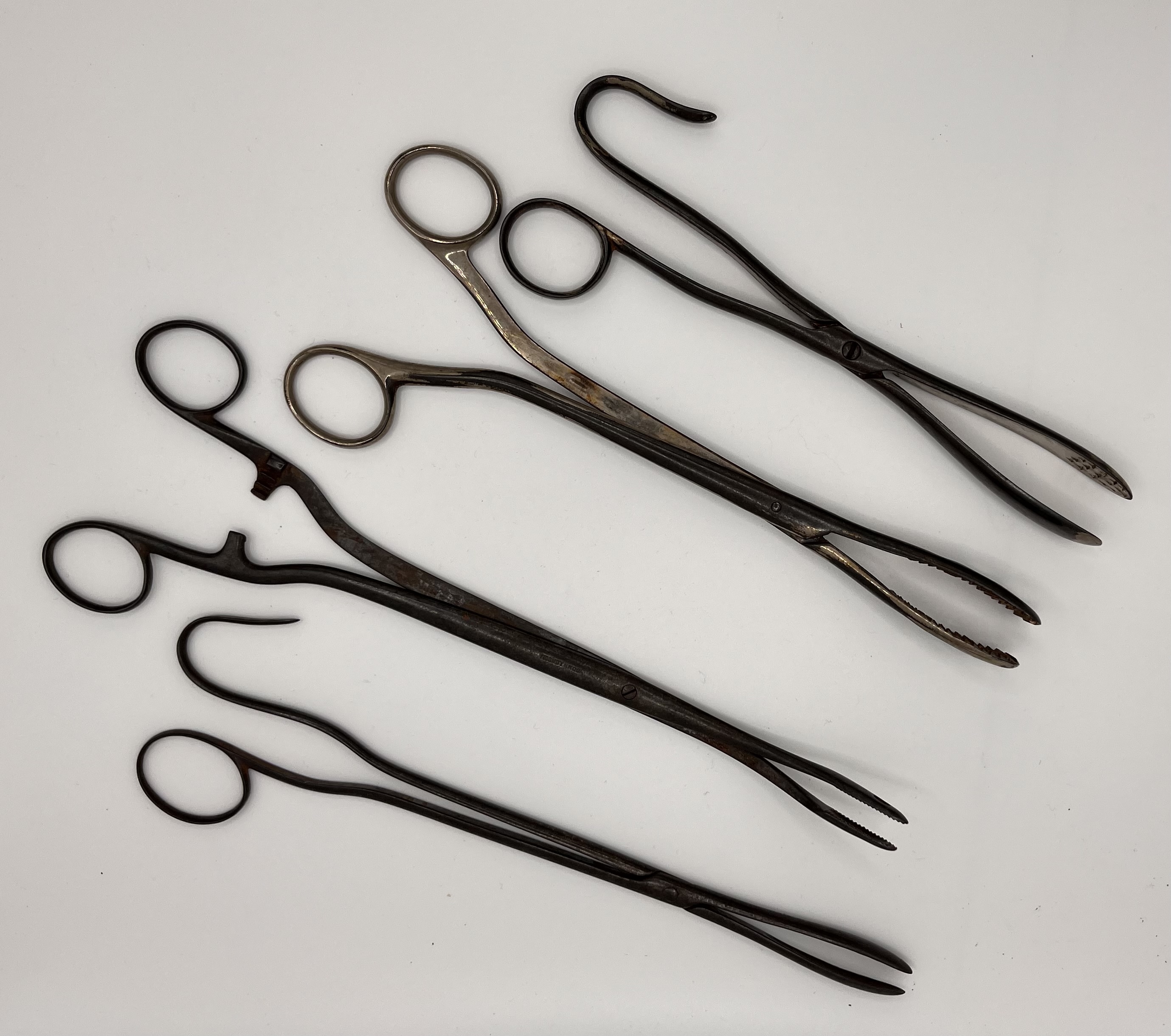
Bladder stone extraction forceps. These are likely to be C19th or C20th but the design is many hundred of years old
Urethrotome
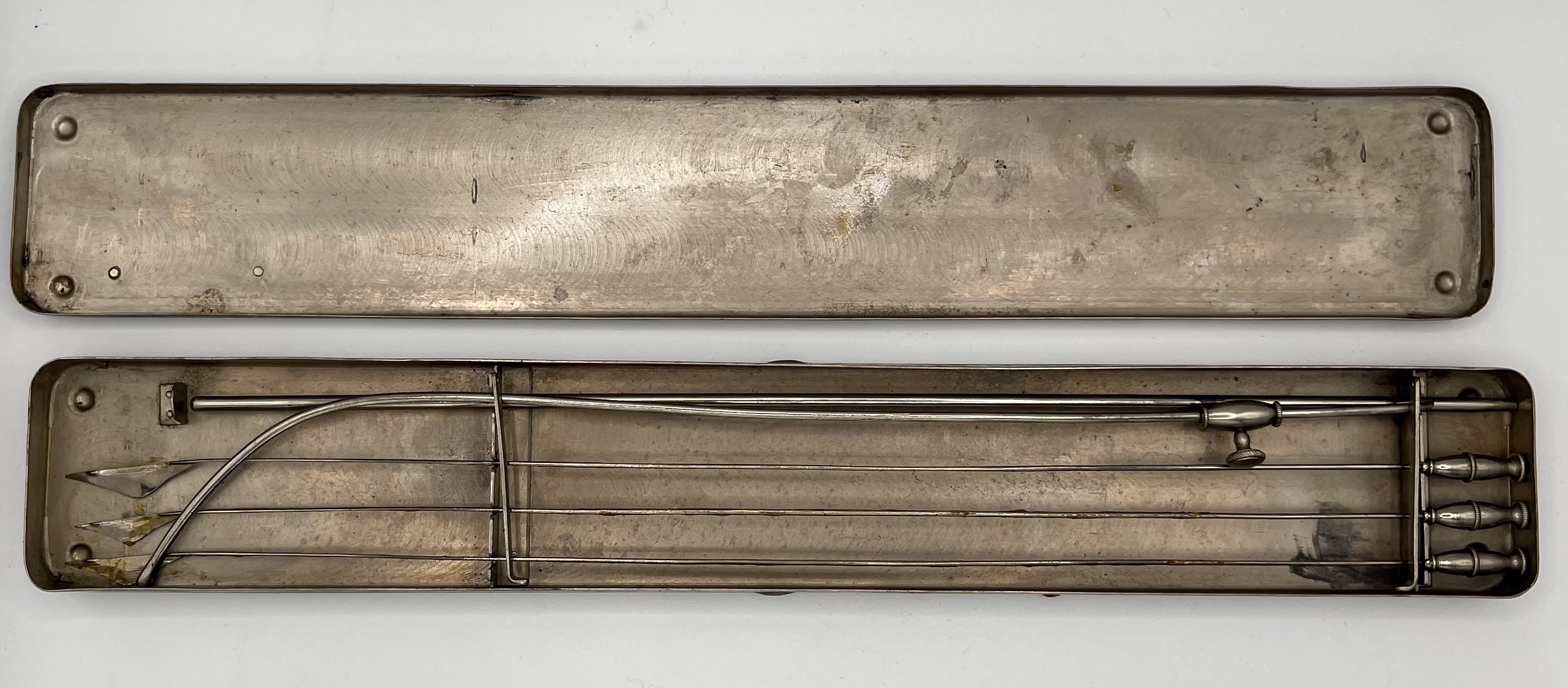 For blind cutting of urethral strictures
For blind cutting of urethral strictures
Needle holders
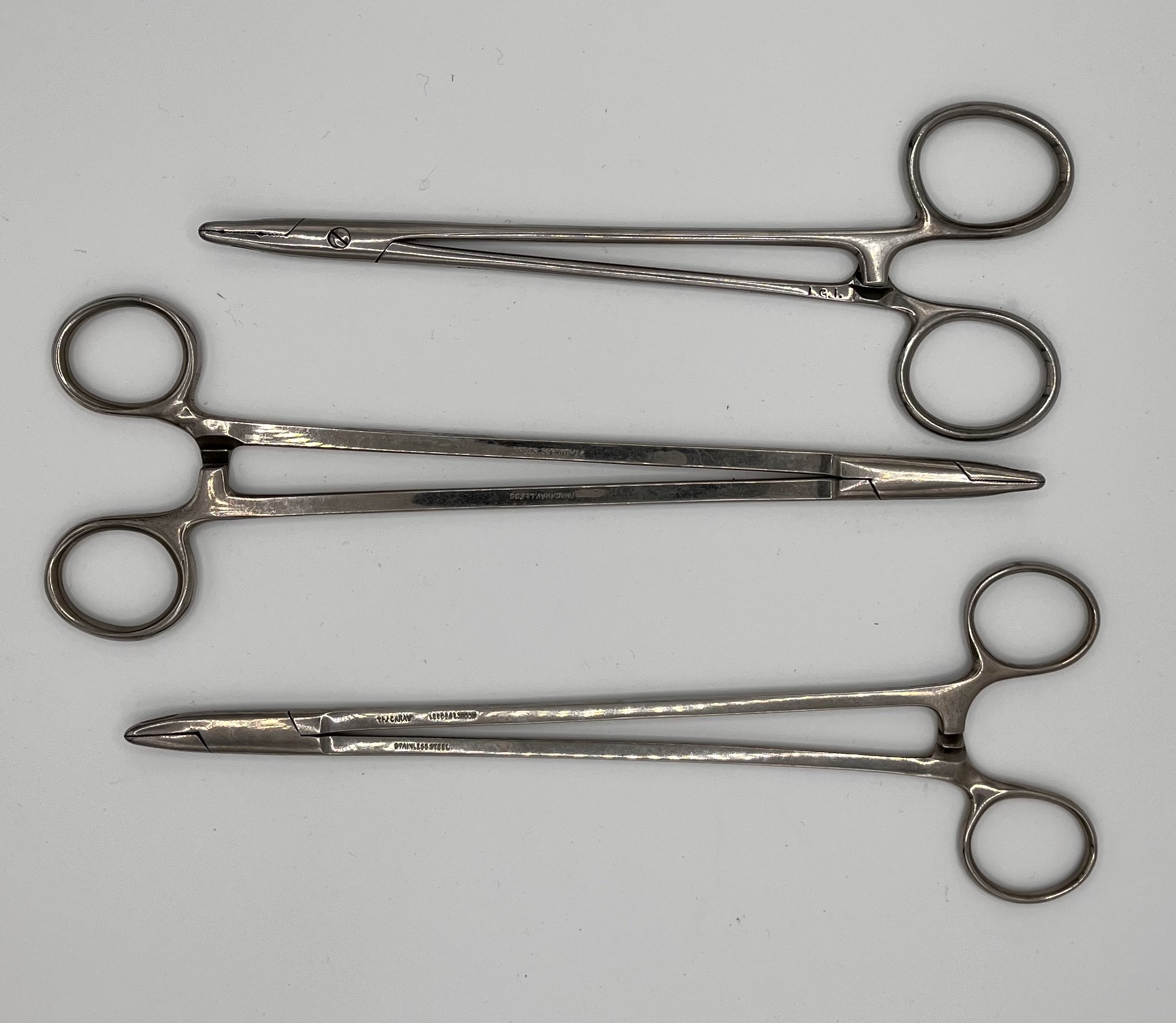
Unlike the handled distal eyed needle holders above, these are what we are more used to seeing to hold loose needles.
Retractors
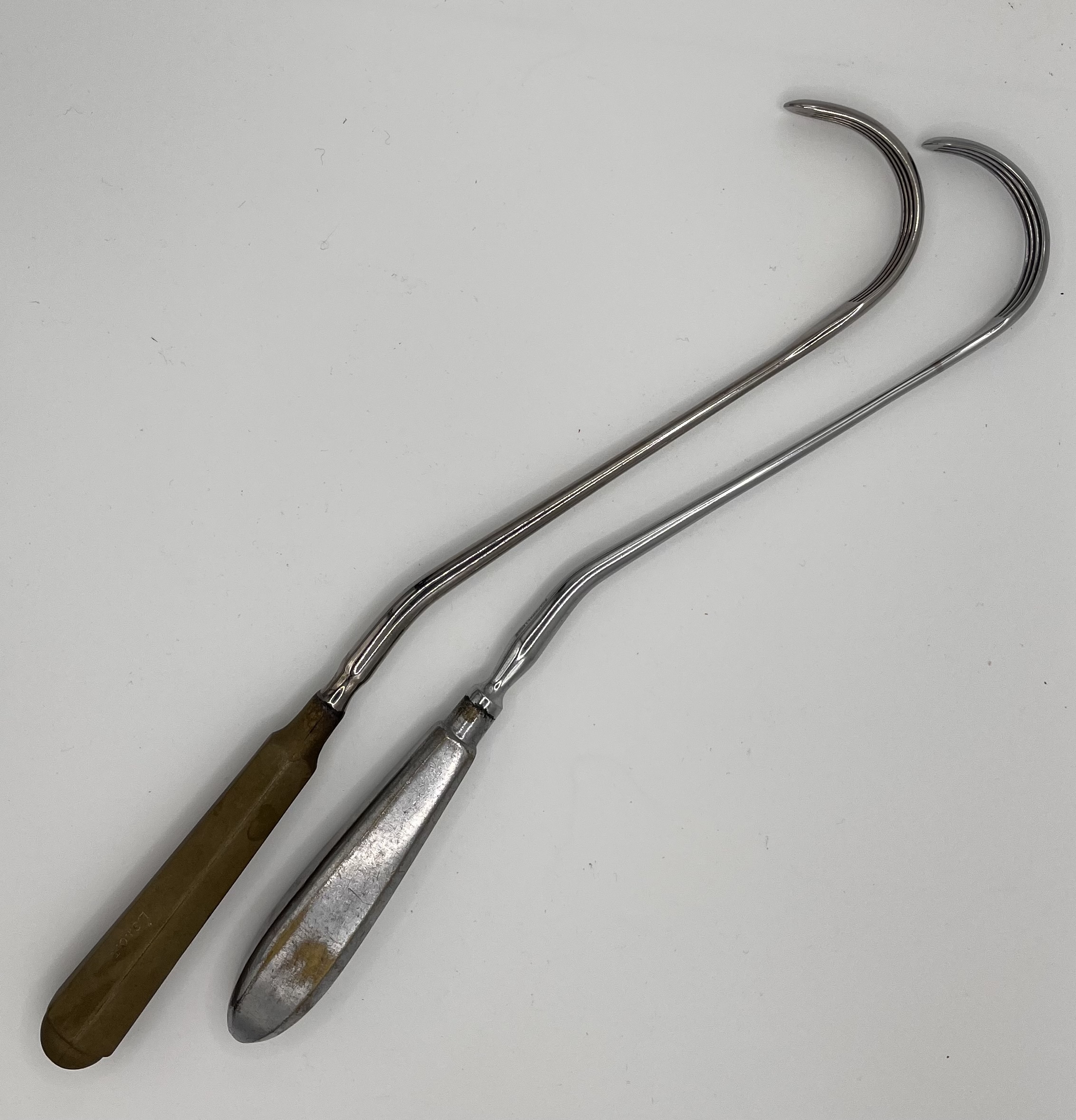
Long retractors, probably used in open nephrectomy
← Back to Other Instrument Collections